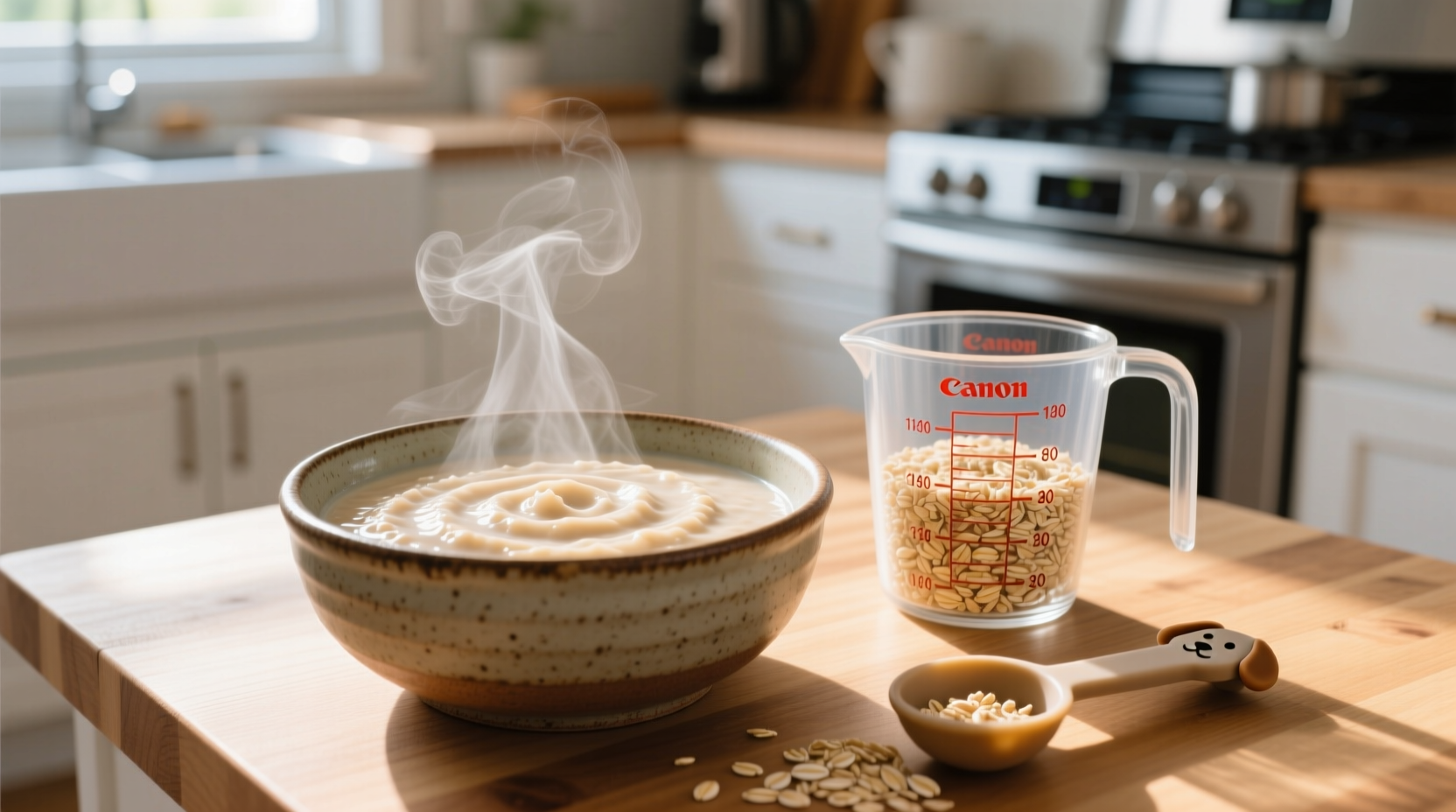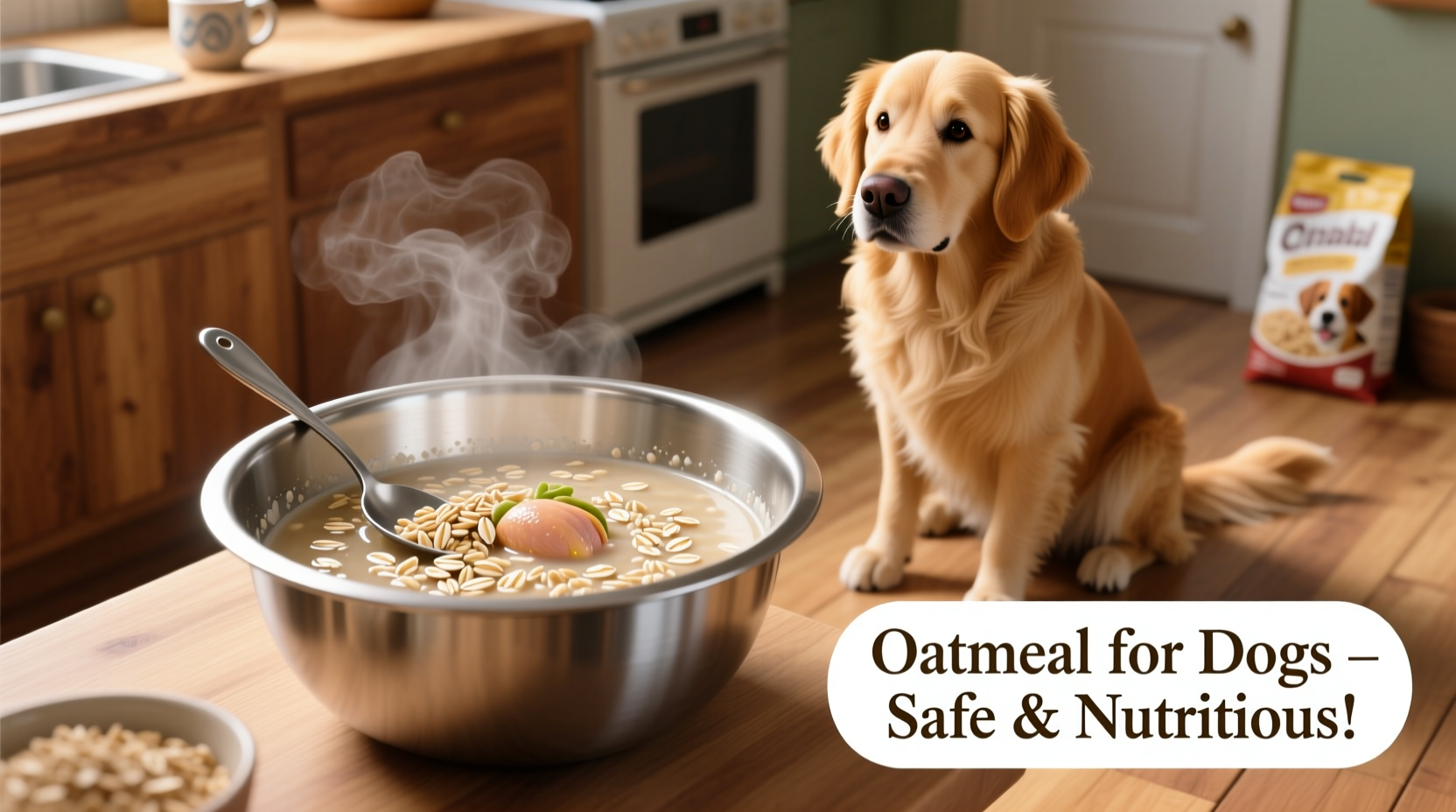As a pet owner, you've probably wondered whether human foods are safe for your dog. Oatmeal ranks among the most vet-approved options when prepared correctly, offering gentle fiber for sensitive stomachs and a warm, comforting meal during colder months. This guide delivers science-backed preparation methods endorsed by veterinary nutritionists, helping you avoid common mistakes that could harm your pet. We'll cover precise cooking techniques, portion guidelines based on your dog's size, and critical ingredients to never include.
Why Oatmeal Benefits Dogs (When Prepared Properly)
Oatmeal provides soluble fiber that helps regulate canine digestion, making it particularly valuable for dogs experiencing occasional diarrhea or constipation. Unlike many human foods, plain oatmeal contains no toxic compounds when served in appropriate portions. The American Kennel Club confirms that properly cooked oatmeal serves as a safe alternative carbohydrate source for dogs with wheat allergies.
However, oatmeal should never replace your dog's balanced diet. It functions best as an occasional supplement—about 10% of daily caloric intake maximum. Overfeeding can lead to weight gain or digestive upset due to its carbohydrate content.
Critical Safety Guidelines Before You Start Cooking
Before preparing oatmeal for your dog, understand these non-negotiable safety rules. The ASPCA Animal Poison Control Center emphasizes that certain common oatmeal additives prove deadly to dogs:
| Safe Ingredients | Dangerous Ingredients | Why They're Harmful |
|---|---|---|
| Plain rolled oats | Xylitol (in sugar-free products) | Causes hypoglycemia, liver failure |
| Water for cooking | Raisins | Kidney failure risk |
| Small amount of unsalted broth | Nutmeg | Neurological toxicity |
| Cooling time (to room temp) | Excess sugar | Dental disease, obesity |
Always consult your veterinarian before introducing new foods to dogs with diabetes, pancreatitis, or kidney conditions. Puppies require different nutritional balances than adult dogs, so professional guidance proves essential.
Step-by-Step: How to Cook Oatmeal for Dogs
Follow this precise method to prepare veterinarian-approved oatmeal for your canine companion. This technique ensures optimal digestibility while eliminating common preparation errors.
Ingredients & Equipment
- 1 cup plain rolled oats (not instant or flavored packets)
- 2 cups water or low-sodium chicken/beef broth
- Small saucepan with lid
- Wooden spoon
- Thermometer (optional but recommended)
Cooking Instructions
- Measure precisely: Use a kitchen scale for accuracy—1 cup oats weighs approximately 80g
- Combine ingredients: Add oats and liquid to cold saucepan before heating
- Low-temperature cooking: Bring to gentle simmer over medium-low heat (avoid boiling)
- Stir continuously for first 2 minutes to prevent sticking, then every 30 seconds
- Cook until creamy: 5-7 minutes until thickened but still moist (not dry or gluey)
- Cool completely: Transfer to bowl and refrigerate 2+ hours until below 70°F (21°C)

Portion Guidelines Based on Dog Size
Serving sizes must correlate with your dog's weight to prevent digestive issues. The Veterinary Partner nutrition guidelines recommend these maximum portions per meal:
- Toy breeds (under 10 lbs): 1-2 teaspoons
- Small dogs (10-20 lbs): 1 tablespoon
- Medium dogs (20-50 lbs): 2-4 tablespoons
- Large dogs (50+ lbs): ¼ to ½ cup
Never serve more than twice weekly. Introduce gradually over 7-10 days while monitoring for allergic reactions like itching, vomiting, or loose stools.
When Oatmeal Isn't Appropriate for Your Dog
Despite its benefits, oatmeal proves unsuitable in certain situations. Recognize these context boundaries where alternatives might serve better:
- Diabetic dogs: Oatmeal's glycemic index requires veterinary approval
- Pancreatitis history: High fiber may trigger flare-ups
- Grain allergies: Some dogs react to oat proteins
- Obesity management: Lower-calorie alternatives preferred
For dogs needing digestive support but unsuitable for oatmeal, consider pumpkin puree (not pie filling) or boiled sweet potato as alternatives. Always discuss dietary changes with your veterinarian, especially for dogs on prescription diets.
Common Preparation Mistakes to Avoid
Even well-intentioned owners make critical errors when preparing oatmeal for dogs:
- Using instant packets: These contain artificial sweeteners and excessive sugar
- Serving hot: Can burn mouth and esophagus (must cool below 70°F)
- Adding "healthy" toppings: Nuts, dried fruits, or spices often prove toxic
- Overfeeding: Exceeding 10% of daily calories causes nutritional imbalance
The Pet Nutrition Alliance reports that 68% of oatmeal-related vet visits stem from owners using flavored instant varieties. Always choose plain rolled oats from the bulk section, checking labels for hidden additives.
Integrating Oatmeal Into Your Dog's Diet
For best results, mix cooled oatmeal with your dog's regular food rather than serving it alone. This maintains nutritional balance while providing digestive benefits:
- Mix with lean protein like boiled chicken for complete meal
- Add to food during transition periods for sensitive stomachs
- Use as occasional treat replacement (reduce regular food accordingly)
- Store leftovers in airtight container for up to 3 days in refrigerator
Monitor your dog's response for 24-48 hours after first serving. Ideal results include well-formed stools and maintained energy levels. Discontinue immediately if you notice vomiting, diarrhea, or lethargy.











 浙公网安备
33010002000092号
浙公网安备
33010002000092号 浙B2-20120091-4
浙B2-20120091-4